Types of Manuscripts
The Journal receives two types of manuscripts:
Papers: These are original contributions that present scientific research findings based on original information or conceptual reflection about the borders between peoples, social groups, and States. The Journal welcomes texts of between 18 to 30 pages which have not been published and are not in the process of being reviewed in another journal. All collaborations addressed to this section shall be submitted to double-blind peer review.
Bibliographic reviews: These are critical comments evaluating a recently published work (within the last three years). We welcome texts of between 4 and 10 pages, the approval of which is subject to the consideration of the Editorial Board.
Requirements for the Submission of Original Manuscripts
- Submit textual content in a file in an electronic word processing format, without a password (PDF files are not suitable for the editing process).
- Maps, illustrations, and photographs must be submitted in JPG format with a minimum resolution of 300 dpi, in black and white or in color. Tables or graphs must also be submitted in a separate spreadsheet.
- Have the right to reproduce graphic material, images, photographs, artistic work, etc., granted by the author or authors, or a third party.
- Once the submission requirements have been completed, the editing phase begins.
Manuscript Structure
- Title (presented in a clear, concise, and precise way)
- Abstract (a description of objectives, methods, results, and conclusions)
- Keywords (words expressing the content without repeating the words in the title)
- The three aforementioned sections must be submitted in Spanish and English.
- Introduction (presentation of the topic, objectives, previous work, sources, and method)
- Development of arguments and findings (analysis of information and assessment of the paper’s contributions: facts, observations, interpretations, relationships, as well as novel and relevant correlations with respect to previous studies)
- Final considerations (evaluation of result reliability and validity, their relationship to the objectives, and consequences of their contribution)
- Referenced bibliography
Review Structure
- Title (presented in a clear, concise, and precise way)
- Abstract (a description of objectives, methods, results, and conclusions)
- Keywords (words expressing the content without repeating the words in the title)
- The three aforementioned sections must be delivered in Spanish and English.
- Bibliographic record
- A review’s content must include the following elements: a description, analysis, and evaluation of the book, comparing and contrasting the work in relation to the theme addressed.
- Referenced bibliography
Formatting Guidelines
The text’s basic and general format must be: 12-point Times New Roman, 1.5 line spacing with justified text alignment.
Page layout: 2.5 cm upper and lower margins, 3.0 cm left and right margins; page number in the lower right corner of the page in 12 point Times New Roman font.
Sections:
Title: centred in 14-point bold font.
- Translated title: centred in 14-point bold font.
- Author(s): 12 point, left aligned paragraph; below which should appear:
- Institutional affiliation
- E-mail address
- ORCID iD Number (https://orcid.org)
- Abstract: No more than 10 lines, 12-point font with justified text alignment.
- Key words: No more than five words that reflect article content and do not repeat the words in the title, 12-point font with justified text alignment.
- Abstract: version in English, no more than 10 lines, 12-point font with justified text alignment.
- Keywords: version in English, 12-point font with justified text alignment.
- Text body: 12-point font with justified text alignment, without double spacing between paragraphs.
- Footnotes: 11-point font, single spacing with justified text alignment.
- Textual citation or transcription of more than 40 words: 11-point font with a 4 cm indentation, without quotation marks, separated from the text body.
- Images, tables, and graphs must be numbered and must also be mentioned in the text body with the corresponding page number (e.g., See Figure 1; See Table 3; etcetera). Tables must also be previously cited in the text body with the corresponding page numbers (e.g., See Table 3, etcetera).
- Image headers: 12-point font, centred and bold.
- Image footers: 11-point font, centred in relation to the image.
- Notes and sources of the image, graph, or table footers: 11-point font, centred.
- Acknowledgements: Placed after the final section of the text body. This information must be entitled “Acknowledgements” in bold, point 12 font and centred. The text with this information will also be in point 12 font with justified text alignment.
- Bibliographic References must appear in alphabetical order, without line break at the end of the paragraph.
- Appendixes, annexes, glossaries and other materials must come after the bibliographic references. They must be expressly cited within the manuscript body. If these materials are extensive, they must be saved as PDF files.
- Maps, illustrations, and photographs must be submitted in JPG format with a minimum resolution of 300 dpi, either in black and white or in color.
References
- All the works cited in the critical apparatus, body text, footnotes, or annexes must be listed among the bibliographic references.
- The DOI of all the reference sources that have one must be included.
- A period must not be written after the DOI or URL.
- The bibliography must be presented in APA format (sixth edition).
Textual quotation
The author should document the opinions of other authors mentioned in his text, referring the original source. Any quotation with 40 word or less should be wrapped into quotes. The omitted words or phrases should be replaced by suspension points [...]. The textual quotation should include the author’s surname, the publication year and the page/s where the quotation was taken.
The textual quotes with more than 40 words should be separates from the text with a five spaces indent from the left edge and without quotes, with smaller font type and spacing.
Paraphrased quotation
A paraphrased or contextual quotation is used when the idea is taken from a text o when it´s summarized without use the textual words of the author. In this case it is recommended to indicate in parentheses, as well as the year, the page or paragraph number, to help readers locate the concepts in a long text
Example:
Ramos Simón (2003:18) sostiene que uno de los cambios generados por las TIC afecta directamente al tiempo, el cual deja de estar cimentado simplemente en el decurso de los días...
Secondhand quotations
When in the quotation another quotation is found, it is copied textually, and then the author’s data and the work’s title should be given below.
Example:
“... del entierro disputado refleje una específica situación histórica y un conflicto del momento (Steiner, 1991)” (Czernikowski et al., 2003:112).
Explanation: The references list will not include the Steiner data because the work consulted was Czernikowski’s.
Accuracy of quotations
The quotation must reproduce the words, the internal punctuation and the spelling of the original source, even if incorrect. In this case, insert the word [sic] between Brackets immediately after the error.
Personal communications
Private letters, interviews, memos, electronic messages (emails, network discussions) or phone conversations are considered personal communications. Due to the reader cannot be referred to the source, these communications are not included in the reference list. Make the quotation with the initials of the sender’s name, the surname, and the date as exact as possible.
Example:
(J.P. Domínguez, personal communication, April 26, 2018).
(J.P. Domínguez, interview, April 26, 2018).
Examples of References in the Referenced Bibliography Section
Books
Castor, Suzy. (1983). Migración y relaciones internacionales (el caso haitiano-dominicano). Mexico: Universidad Nacional Autónoma de México.
Book Chapters
Cedeño, C. (1992). La nacionalidad de los descendientes de haitianos nacidos en República Dominicana, in W. Lozano (Ed.). La cuestión haitiana en Santo Domingo: migración internacional, desarrollo y relaciones inter-estatales entre Haití y República Dominicana, (137-143). Santo Domingo: FLACSO/ North-South Center University of Miami.
Chapters with DOI
Coll, César. (2013). La educación formal en la nueva ecología del aprendizaje: Tendencias, retos y agenda de investigación, in J. L. Rodríguez Illera (Comp.), Aprendizaje y educación en la sociedad digital (156-170). Barcelona: Universitat de Barcelona. DOI: 10.1344/106.000002060
Journal Articles
García, Alfonso. (2008). Identidades y representaciones sociales: La construcción de las minorías. Nómadas, Revista Crítica de Ciencias Sociales y Jurídicas, 18(2), 1-13. Retrieved from http://www.redalyc.org/articulo.oa?id=18101812 (consulted on: 01/15)2020.
Articles in Journals with DOI
Amar-Rodríguez, Victor. (2016). Leer la vida. Una investigación desde la perspectiva narrativa. Revista Latinoamericana de Ciencias Sociales, Niñez y Juventud, 14(2), 975-986. DOI: https://doi.org/10.11600/1692715x.14206261015
Inclusive Language
The Digital Journal of Peoples and Borders considers it essential to become aware of the sexist and excluding uses of language and promotes alternative forms of expression and communication. Thus, we urge authors to use inclusive and non-sexist language in order to visibilize women, balance gender asymmetries, and value the diversity of our society. Some basic language resources are: the authors should avoid using the masculine form as the only point of reference or considering that what is feminine is subordinate to the masculine; they should use gendered or sex disaggregated data or universal generic terms whenever possible, such as “people” or “the staff.” For more information, consult handbooks on the inclusive use of language, such as CLICK HERE [https://www.un.org/en/gender-inclusive-language/guidelines.shtmlb]


